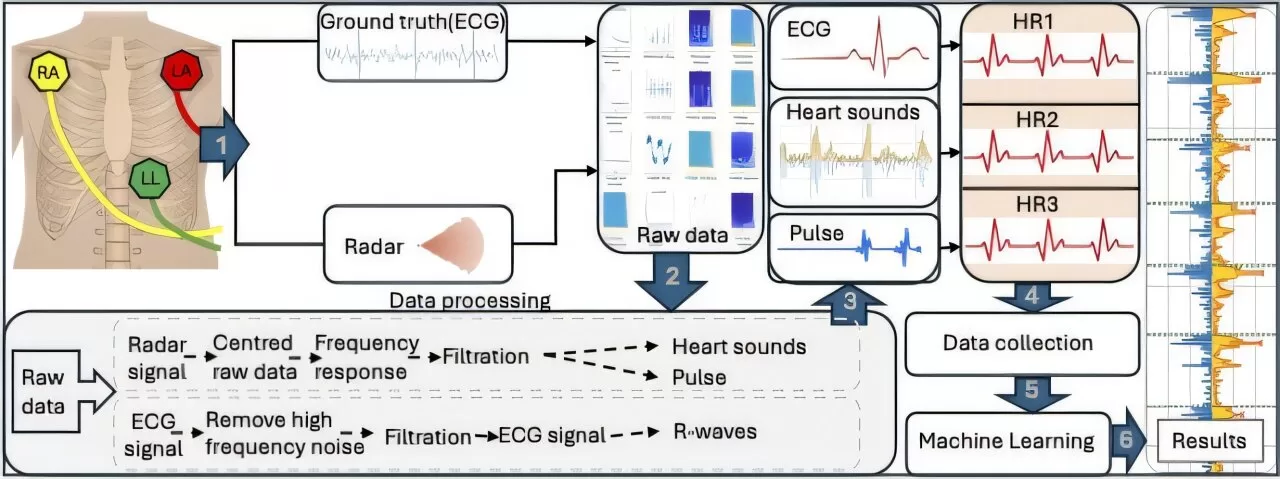In a pioneering development for non-invasive healthcare, scientists at the University of Glasgow have introduced a “Radar Stethoscope” capable of detecting heart sounds with remarkable precision, potentially revolutionizing contactless medical monitoring. This breakthrough system, detailed in the IEEE Journal of Biomedical and Health Informatics, leverages radar technology to “listen” to the heart’s sounds in real time, achieving almost 99% accuracy in comparison to conventional electrocardiogram (ECG) readings.
The radar system was developed by a research team led by Professor Qammer H. Abbasi at the James Watt School of Engineering. The system uses 24 GHz continuous-wave radar, which emits electromagnetic waves that reflect off the patient’s chest. By processing these reflections, researchers can capture not only chest movements but also the distinctive sounds of the heart’s valves as they open and close—mirroring the auditory function of a traditional stethoscope.
This new method represents a significant advancement over previous radar-based techniques, which primarily relied on measuring the subtle movements of the chest for heart rate estimation. However, chest movement measurements alone often lack precision, deviating from ECG measurements by as many as 50 beats per minute during high-intensity states. The radar stethoscope, however, registered a difference of less than one beat per minute, underscoring its impressive accuracy.
The research team conducted extensive trials, capturing heart sounds from male and female volunteers in different conditions: a resting state (60-80 beats per minute), an anxiety-induced state (100-130 bpm), and a transitional phase (80-130 bpm). For each condition, the radar-based readings were consistently close to those obtained from the ECG, affirming the potential of radar technology in providing reliable, contact-free monitoring.
Professor Abbasi explained the significance of these findings, noting that “advances in sensing technologies have opened up promising new methods of tracking patients’ vital signs without physical contact. These advances could provide clinicians with round-the-clock patient monitoring without invasive or uncomfortable wearable sensors.”
Dr. Hasan Abbas, a senior lecturer and co-author of the study, highlighted the privacy benefits of radar monitoring, which, unlike camera-based systems, captures only vital signs and omits any data on the patient’s physical activities or movements.
The new system could support a broader range of health monitoring applications. Professor Muhammad Imran, head of the Communications, Sensing and Imaging Hub, expressed enthusiasm for expanding the technology’s capabilities to detect additional vital signs such as respiratory rate and blood pressure.
Muhammad Farooq, a Ph.D. researcher and paper co-author, commented, “This more refined technique for radar remote health monitoring could help facilitate the diagnosis of heart diseases in the future. The significant accuracy achieved could unlock the technology’s potential for continuous monitoring in clinical settings, enabling critical care without contact.”
As the team works toward refining the system, the radar stethoscope could pave the way for a new era of comfortable, non-invasive patient care, offering a robust alternative to traditional and wearable monitors.











